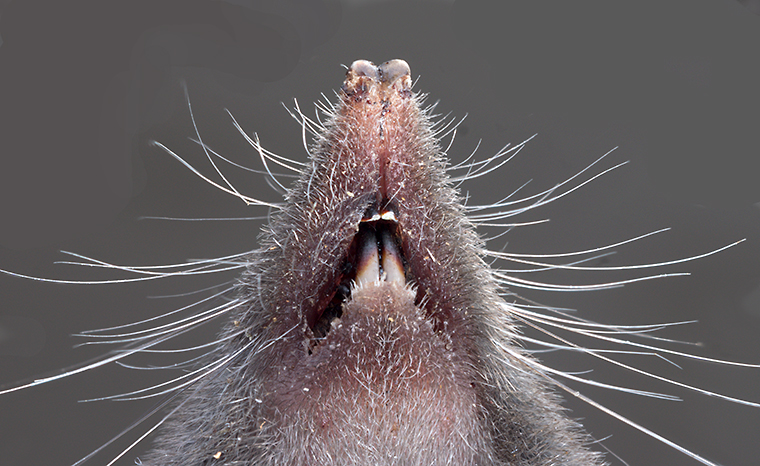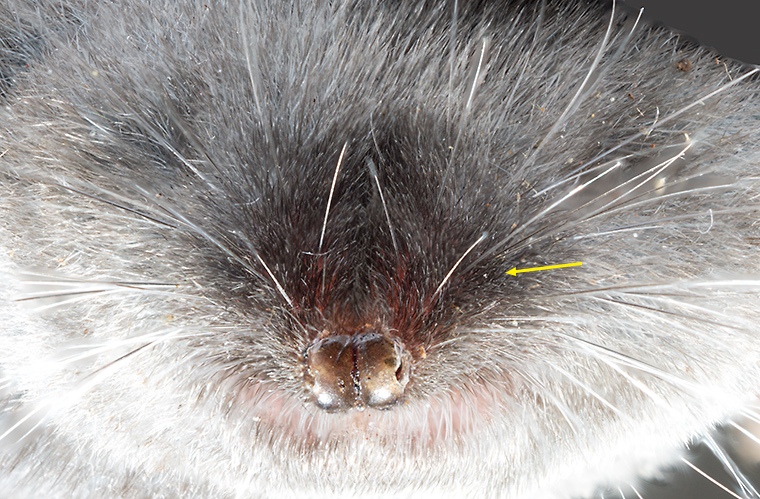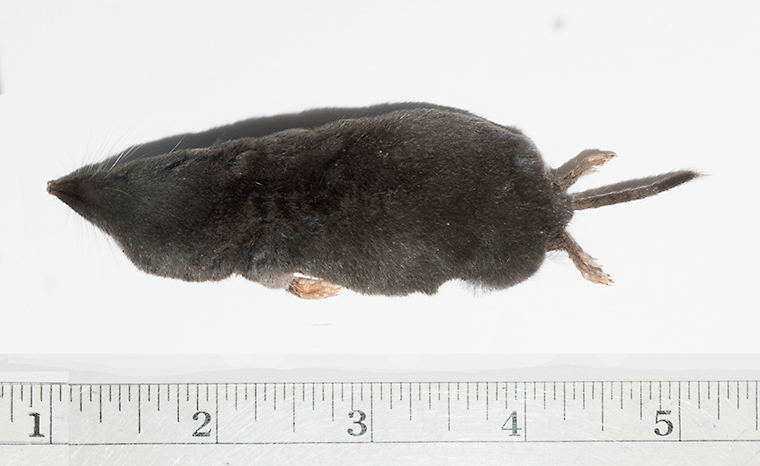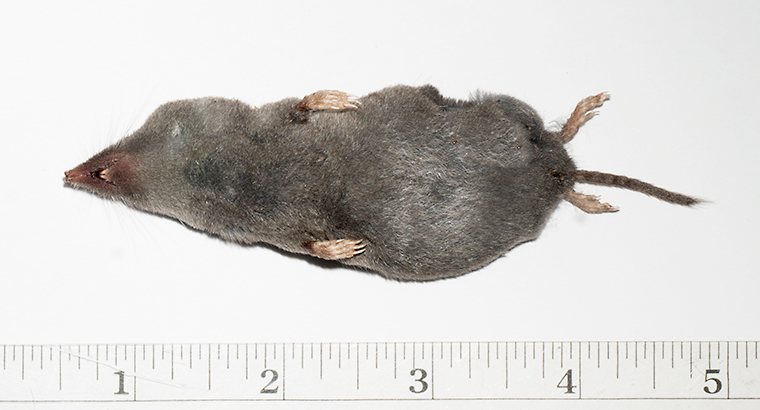What do you think this creature is? I was blowing off the leaves on our driveway when I found it. Unfortunately it was already dead. This view shows its pointed nose, abundance of whiskers, and impressive teeth.
Here is a front view of the little creature. It is covered with soft fur, and its whiskers are shown again. The yellow arrow points to one of its very small eyes. This combination of small eyes and many whiskers indicates a nocturnal existence.
As you have probably already guessed, it is a shrew. Its scientific names is Blarina bevicauda, and its common name is Short-tailed Shrew. The view above shows its small size and short tail. Blarina is apparently a name coined by John Edward Gray in 1838 and thus has no particular meaning. The specific name brevicauda means “short tail” in Latin.
In this ventral view one can see the short legs and streamlined shape.
Shrews are in the mammalian order Insectivora, along with moles, hedgehogs and desmans (small, semiaquatic mammals found in Europe). There are many species of shrews and they have a world-wide distribution. Shrews are ferocious predators with a very high metabolism. Heartbeat rates of 1000 per minute have been recorded in some species, and some must eat every two hours to avoid starvation. Short-tailed shrews eat about three times their weight each day. Favorite food items include worms, insects, voles, mice, snails and even other shrews.
Some shrews, including the Short-tailed Shrew pictured in this post, have poisonous proteolytic saliva. A bite to a mouse will paralyze or kill it. A bite to a human will cause a lot of pain, but will not be lethal. Short-tialed shrews are quite common, but are rarely seen. They spend most of its time in their burrows or beneath the leaf litter.
Discover more from A Naturalist's Journal
Subscribe to get the latest posts to your email.




